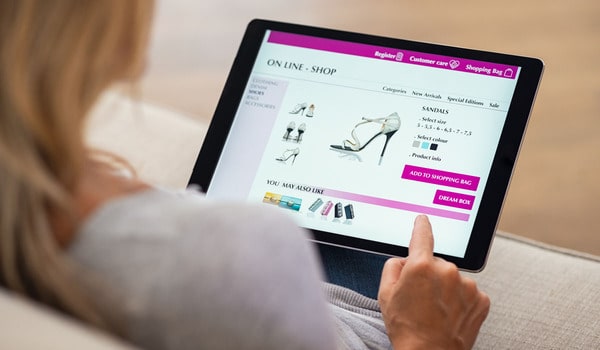
Doing lead nurturing is useful for improving your e-commerce performance and driving the customer to purchase. Let’s find out how together.
Data and studies prove it: it costs 5 to 10 times more to acquire a customer than to keep one already acquired, especially in today’s environment where advertising costs seem destined to reach ever higher levels.
The secret to the success of an eCommerce project is, thus, increasingly linked to the concept of “retention” which, as we have already had the opportunity to elaborate on, is increasingly inextricably linked to that of “personalization of the customer experience“,“customer loyalty“, but not only.
In today’s in-depth study, we discover together how an effective “lead nurturing” can also be a trump card in eCommerce.
From knowledge to loyalty: mapping and optimizing the customer journey
A user’s shopping experience, as we know, is developed through a path, the customer journey, which touches different touchpoints both physical and digital but above all touches different stages, during which a real relationship is created between brand and consumer.
Let us analyze, in detail, the main ones:
- awareness: that is, the consumer’s awareness that they can find in a known product/service, through different channels, the solution to their need;
- familiarity:the product becomes familiar and recognizable in the eyes of the consumer among a wide range of similar products;
- consideration: this is the stage preparatory to choice in which the consumer searches for information;
- purchase: this is the actual purchase stage;
- loyalty: represents probably the most delicate phase in which it becomes necessary for the company to strengthen the relationship with the newly acquired customer in order to build loyalty.
The increasing prevalence of digital media as well as the rise of omnichannel strategies are further revolutionizing the buying process, increasingly placing the consumer at the center of it.
In 2009, Mc Kinsey thus introduced a new model of the buying process that replaces the more traditional model shown above and involves a comparison between brands and consumers, subjecting the former to continuous judgment.
Lead nurturing in eCommerce: how and why to create a strategy
In a context in which the relationship between brand and consumer is becoming increasingly equal, and sometimes more “unbalanced” in favor of the latter, companies are required not only to have the ability to know and empathize with their target audience (it is perhaps more correct to refer to the buyer persona model), but the ability to accompany the potential customer to the purchase, making this last step perceived as the result of an autonomous, independent and conscious choice.
Here then, an effective lead nurturing strategy becomes crucial as its main objective is precisely to accompany and guide the potential customer through his or her buying process, making the buying stage itself as the natural outcome of this process.
Not an aggressive “buy now”-oriented marketing strategy, but one that, starting from a thorough understanding of its potential customer’s needs and interests, guides the latter toward choice, providing them with information, content, but also ad hoc business proposals.
A lead nurturing strategy in eCommerce, in fact, does not end with the first purchase, but is shown to be all the more effective the more it contributes to customer loyalty over time.
Getting people to know and appreciate features and peculiarities of a product/service in an informative and non-sales-oriented tone, approaching the potential customer indirectly, almost on tiptoe, intercepting the so-called latent demand, accompanying him to an informed purchase in a way that increases his satisfaction and trust in the brand: for a lead nurturing strategy in eCommerce we need:
- Get to know our buyer personas thoroughly;
- Have informative and educational content and insights about our products (blog articles, video guides, videos..);
- Have software available that allows us to tailor communications to our target user, sending messages at the most appropriate time and in the most appropriate manner.
Improve your eCommerce performance: here are some interesting insights
Let’s start with a concrete example, imagine that we own an eCommerce of clothing items and assume a first flow.
A new user lands on our site from a campaign focused on knitwear products, on the landing page it might be interesting to immediately show the best-selling and most clicked products in the category. We could invite him or her to register on our site to preview not only new collections, but to receive an exclusive selection of the most interesting products. Once the user has registered, we could create a three-email stream to:
- Making our brand and values known;
- Show a selection of best-selling products from our potential customer’s category of interest;
- stimulate the first purchase by showing testimonials of users who have already purchased or offer a special promotion, perhaps in exchange for additional information (gender, date of birth).
Tailored content and offers to accompany the potential customer to make the first purchase, but not only that: once you have achieved this goal, it is important to cultivate and maintain the relationship with your customer.
In this regard, a lead nurturing strategy can also prove successful in up-selling and cross-selling:
- Dedicated offers to be sent on the birthday date;
- Recovery of abandoned trolleys;
- Follow up on the first purchase with recommended products based on what has already been purchased;
- fidelity program.
Among the various channels to be used for an effective lead nurturing strategy, the email marketing represents the most widely used one.
However, let’s not forget that thanks to a platform of marketing automation and web personalization such as Blendee it is possible to deploy various activities involving multiple channels, from the website to emails, to text messages, just to name the most popular ones!




